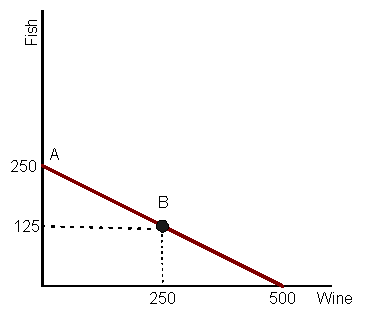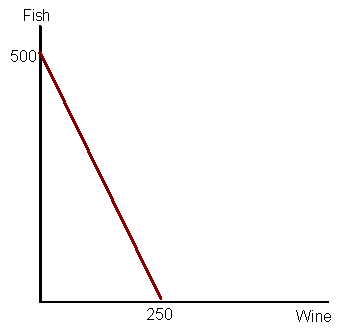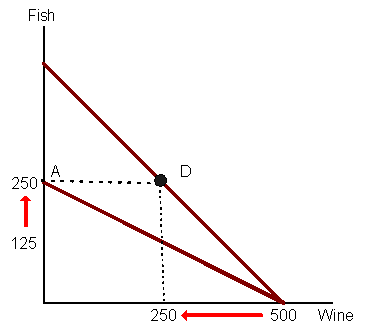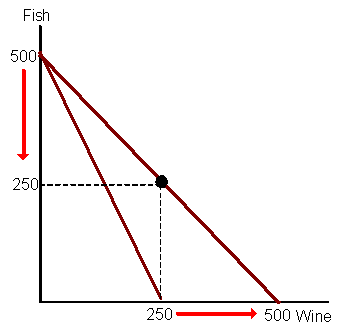- CFA Exams
- 2026 Level I
- Topic 2. Economics
- Learning Module 6. International Trade
- Subject 1. International Trade
Seeing is believing!
Before you order, simply sign up for a free user account and in seconds you'll be experiencing the best in CFA exam preparation.
Subject 1. International Trade PDF Download
Benefits and Costs
Here are the benefits:
- International trade and specialization result in lower prices and higher domestic consumption for imported products, and higher prices and lower domestic consumption for exported products.
- International trade permits the residents of each nation to concentrate on the things they do best (produce at a low cost) while trading for those they do least well.
- Industries experience greater economies of scale.
- Households and firms have greater product variety.
- Resources are allocated more efficiently.
Costs:
- International trade may result in the loss of jobs in developed countries.
- The potential for greater income inequality increases.
Countries have different resource endowments. Some have an abundance of labor whilst others possess fertile lands. Differences in resource endowments result in countries incurring different opportunity costs of production for the same products.
Comparative advantage is the ability to produce a good at a lower opportunity cost than others can produce it. Relative costs determine comparative advantage.
If each country has a comparative advantage in producing a specific good, international trade will lead to mutual gain because it allows the residents of each country to:
- Specialize more fully in the production of those things that they do best (i.e., at a lower opportunity cost).
- Import goods when foreigners are willing to supply them at a lower cost than domestic producers.
A nation can have a comparative advantage in producing a good even if it has no absolute advantage in producing any good. As long as the relative costs of producing two goods differ in two countries, comparative advantage exists and gains from specialization and trade will be possible. When this is the case, each country will find it cheaper to trade for goods that can be produced only at a high opportunity cost.
We are going to start with some simplifying assumptions:
- Only two countries exist: X and Y.
- Only two products are produced in each country: wine and fish.
- The only resource in each country is labor.
Country X has an absolute advantage in producing both products (i.e., country X's laborers are more efficient than those in country Y).
Each worker in X is able to produce either 5 fish or 10 bottles of wine per day. The opportunity cost of 1 fish produced in X is 2 bottles of wine.
A production possibilities frontier (PPF) represents the various maximum combinations of outputs of the two products that a country is able to produce given its current resources.
Any point on the PPF represents an attainable combination of fish and wine. The slope of the PPF represents the opportunity cost of wine relative to fish. For example, if X was consuming 250 million fish and no wine at point A, the cost of increasing wine consumption to 250 million bottles would be that 125 million fish would have to be sacrificed (i.e., it would move to point B).
In Y, each worker can produce either 2 fish or 1 bottle of wine per day. One bottle of wine costs 2 fish.
In the absence of trade, a country's consumption possibilities are constrained by the country's production possibilities frontier (i.e., country X could not consume 125 million fish and more than 250 million bottles of wine).
Since there are differences in the opportunity costs of production, trade between the two countries can take place and benefit both.
Let's assume that they set the terms of trade at 1 bottle of wine costs 1 fish.
Country X now specializes in producing wine and produces 500 million bottles of wine and no fish. However, it now has the option of consuming all the wine itself or selling it all and obtaining 500 million fish in return. In other words, PPF swivels upwards as shown.

It is now obvious that country X is better off than before, since by selling 250 million bottles of wine in exchange for 250 million fish, point D (consuming 250 million fish and the remaining 250 million bottles of wine), a previously unattainable point, is possible.
How is country Y faring? With the terms of trade set at 1 fish to 1 bottle of wine, Y could specialize in what it does best - producing fish, and produce 500 million fish. It now has the option of selling all of those fish for bottles of wine, so that PPF swivels outwards as shown, to indicate the two options.

Whereas country Y previously could have 250 million bottles of wine and no fish, it can now trade 250 million fish (and be left with 250 million fish) and receive 250 million bottles of wine in exchange. In other words, a previously unattainable point such as F is now attainable.
Note that the nation that has a steeper production possibilities line has a comparative advantage in the good on the vertical axis and the other nation has a comparative advantage in the good on the horizontal axis.
Comparative advantage results in an expansion of total output.
It also results in mutual gains for each trading partner if each specializes in producing that which it can produce at relatively low cost and uses the proceeds to purchase goods that it could only produce at a higher cost.
For the purposes of trade, it is comparative advantage, not absolute advantage, that matters.
Because trade permits nations to expand their joint output, it also allows each nation to expand its consumption possibilities. Trade between nations will lead to an expansion in total output and mutual gain for each trading partner when each country specializes in the production of goods it can produce at a relatively low cost and uses the proceeds to buy goods it could produce only at a high cost. As long as there is some variation in the relative opportunity cost of goods across countries, each country will always have a comparative advantage in the production of some goods.
Countries gain by consuming output combinations outside their respective production possibilities frontier. Trade does not create winners and losers. It creates only winners.
Models of Comparative Advantage
Adam Smith:
- Principles of division of labor and specialization among countries.
- Each country produces goods that it can produce more of, for the same amount of resources/time.
- Law of absolute advantage.
Ricardian Model:
- Labor is the only production factor.
- Advantageous trade can occur between countries if the countries differ in their technological abilities to produce goods and services. The basis for trade is differences in technology.
Heckscher-Ohlin Model:
- Trade based on resource availability.
- Countries no longed differ by level of technology but by the factors of production with which they are endowed. Goods differ according to the factors of production they require.
User Contributed Comments 3
| User | Comment |
|---|---|
| krishna2002 | As long as the relative costs of producing the two goods differ in two countries, comparative advantage exists and gains from specialization and trade will be possible. Each country will find it cheaper to trade for goods that can be produced only at a high opportunity cost |
| choas69 | i just want to know how can they produce fish and what kind of country is country X i might want to immigrate soon. |
| walterli | MAGA |

I used your notes and passed ... highly recommended!

Lauren
My Own Flashcard
No flashcard found. Add a private flashcard for the subject.
Add